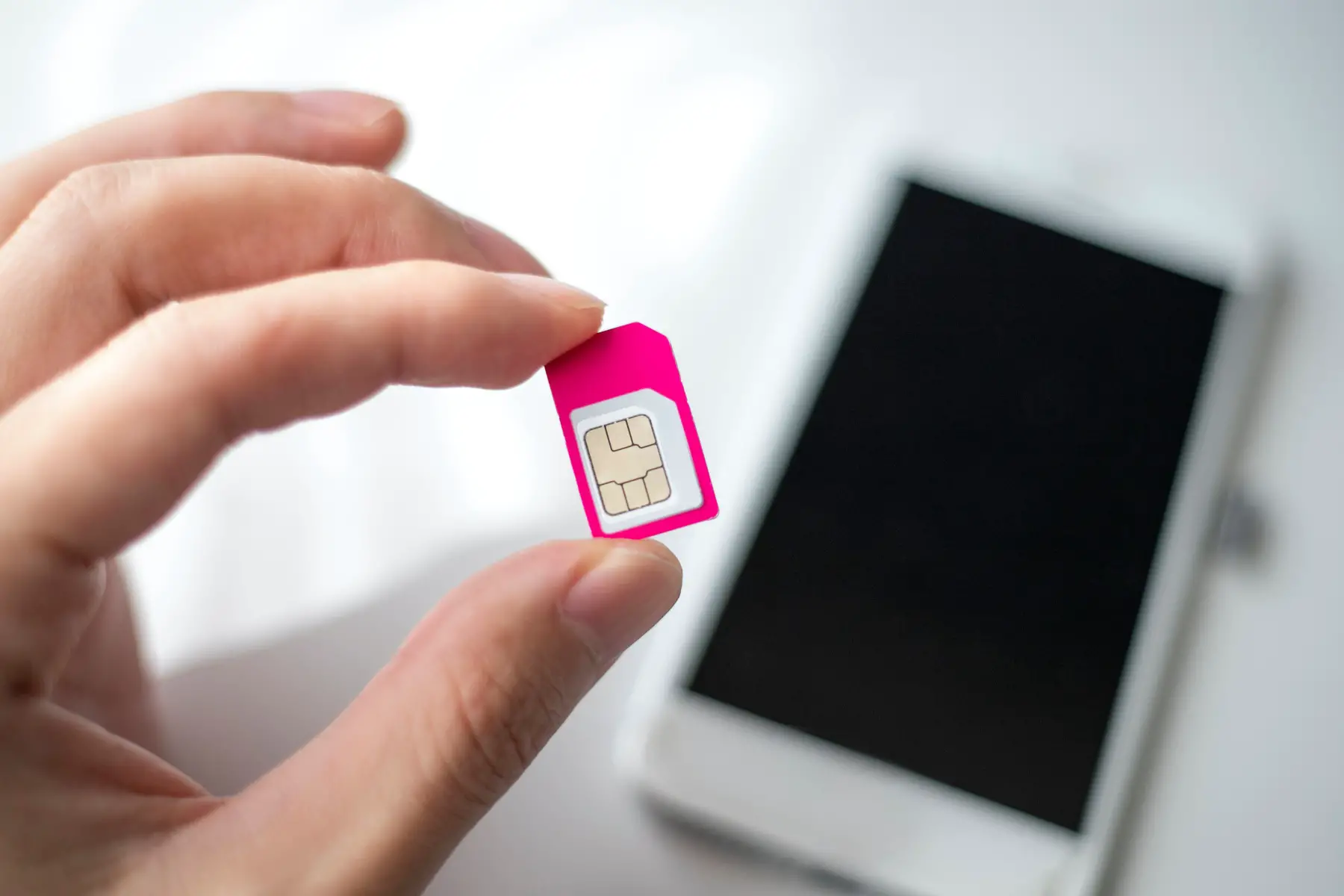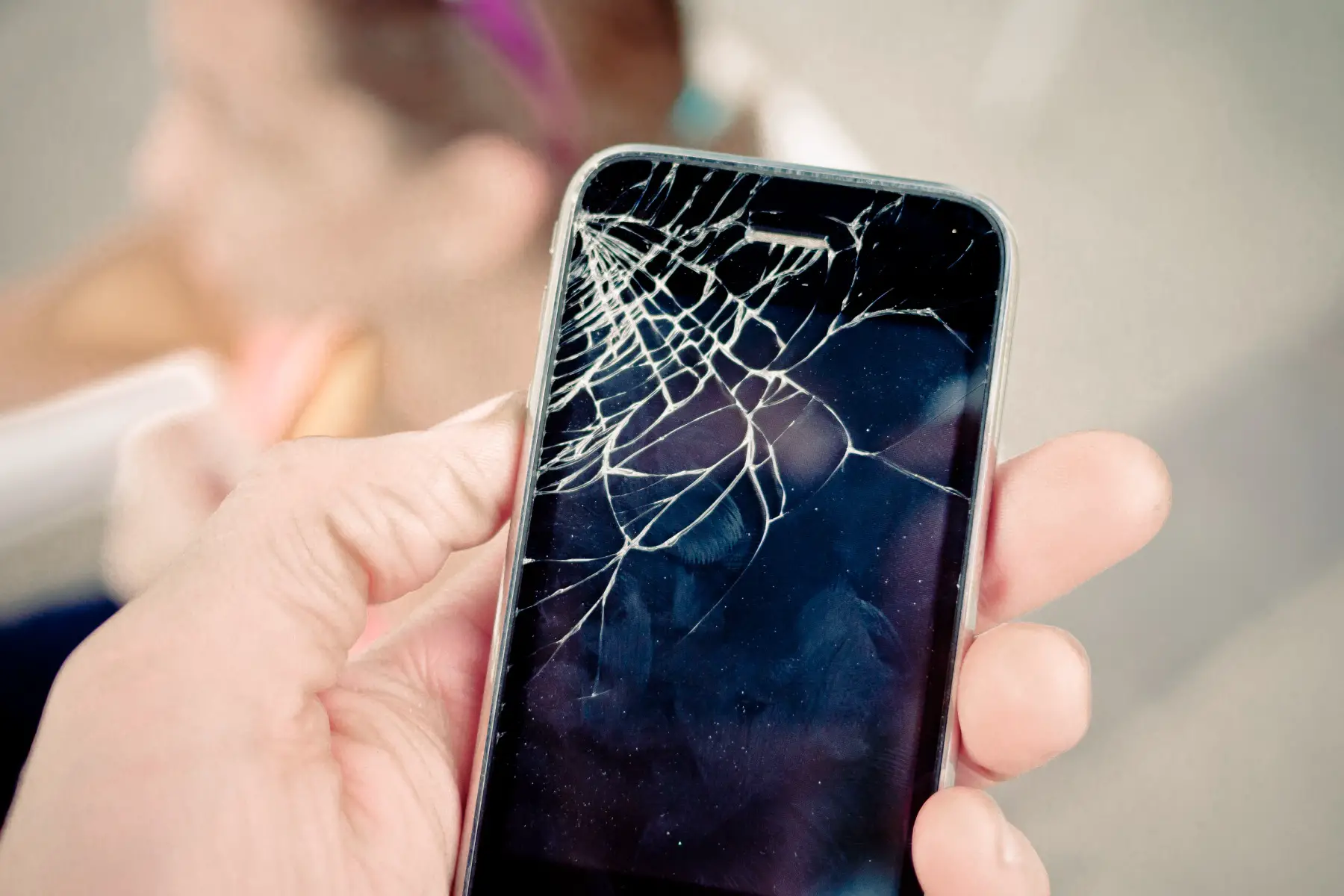Like any relocation, there are a few things to take care of when you first move to Japan, but one of the most important things on the list is setting up your mobile phone (携帯電話) or SIM card (シムカード). After all, mobile phones are an essential part of daily life in Japan and are used for everything from setting up a bank account to accessing your commuter pass.
However, with so many different options available, choosing the right one can feel overwhelming. So, to help you get connected, this article outlines everything you need to know about mobile phones and SIM cards in Japan, including:
- Japan’s mobile network
- Can you use your own mobile phone in Japan?
- Mobile phone operators in Japan
- Pre-paid vs mobile contracts
- Japanese mobile phone plans and contracts
- Pre-paid SIM cards in Japan
- Mobile phones in Japan
- Japanese mobile numbers
- Repairing a mobile phone in Japan
- Japanese mobile phone laws
- How to complain about a mobile phone provider
- If you don’t have a mobile phone in Japan
- Useful resources
Japan’s mobile network
It’s no secret that mobile phones are an important part of everyday life in Japan. In fact, as of 2021, the country has one of the highest mobile phone subscription rates in the world, amounting to 161 per 100 people. It comes as no surprise, then, that around 99% of the population has network coverage.

Notably, 3G services are no longer being offered, and most mobile phone carriers now use 4G, LTE, or 5G technology. In fact, major carriers will terminate 3G services by the end of March 2026.
Wi-Fi usage in Japan
When it comes to internet usage in Japan, the numbers speak for themselves. According to the Ministry of Internal Affairs and Communications of Japan (MIC – 総務省), the percentage of households with internet access is around 86% (in Japanese), with about 99% of those households using a Wi-Fi router.
Additionally, free Wi-Fi is available in public places such as airports, train stations, libraries, shopping malls, and convenience stores. Furthermore, hotels and many restaurants and cafes also offer free Wi-Fi, although you may be required to log in.
Wi-Fi connection in Japan
Overall, the Wi-Fi connection in Japan is reliable and fast. In fact, when comparing internet speeds around the world, it ranks 13th out of 176 countries.
The average annual household expenditure on internet connection charges in Japan amounted to approximately ¥28,100 in 2021; an increase of almost ¥7,000 since 2013. However, it is worth noting that this figure can vary based on your location and service provider.
Can you use your own mobile phone in Japan?
You can use your own mobile phone with a Japanese SIM card when you arrive in the country. However, to do this, your phone must be unlocked in your home country. Generally speaking, most modern smartphones are compatible with the mobile networks in Japan, so you should be able to get reconnected with no problems.
International roaming
Although international roaming is an option while living in Japan, it can be quite expensive depending on which country you have come from, as well as your mobile phone plan and carrier. Therefore, a Japanese SIM card is recommended for longer stays. Alternatively, you can rent a pocket Wi-Fi device (ポケットワイファイ).
Mobile phone operators in Japan
There are four major mobile phone providers (プロバイダー) in Japan, as well as several MVNOs (Mobile Virtual Network Operators) to choose from. These providers offer contract plans and SIM cards.
The big four providers are:
| Mobile Operator | Coverage information |
| NTT docomo (NTTドコモ) | This provider is owned by NTT and has over 40 million subscribers. They offer voice and data plans, 5G, and mobile Wi-Fi devices as well as SIM cards in Japan. |
| au by KDDI (KDDI) | The second-largest mobile phone provider in Japan offers a variety of plans and services including 5G as well as SIM cards and Wi-Fi devices |
| Softbank (ソフトバンク) | Softbank has over 45 million subscribers and offers a variety of plans and services including 5G. They also provide SIM cards and Wi-Fi devices. |
| Rakuten (楽天モバイル) | This mobile service provider is fairly new, but gaining popularity. They offer SIM cards and unlimited data plans with competitive pricing. |
All the major mobile operators provide the same level of coverage and similar services. You can use this comparison website (in Japanese) or check their individual websites to get an idea of plans and costs.
Notably, most companies from the big four to smaller MVNOs are promoting sustainability. For instance, many have recycling programs, energy-efficient devices, and energy-efficient data centers.
Pre-paid vs mobile contracts
Contract-based mobile phone plans are more popular in Japan compared to pre-paid (プリペイド) plans. In fact, about 80% of mobile phone subscriptions are contract-based. Generally speaking, these plans are better suited if you are planning to live in the country long-term as they offer more data and calling plans, better coverage, and more phone choices.

On the other hand, if you only plan to stay in Japan short-term, then a pre-paid plan is a good option as they don’t require a contract or credit check, and there are no cancellation fees. That said, you will miss out on additional services and deals.
Japanese mobile phone plans and contracts
In addition to standard plans that include calls (通話), texts, and data (データ), it is also possible to opt for voice-only and data-only plans. Furthermore, mobile phone plans can be bundled with home internet packages, video-streaming subscriptions, and other services.
Some of the most common phone plans in Japan are:
- Flat-rate plan (定額プラン): For a fixed monthly fee, these plans provide texts, calls, and unlimited data usage. They are a bit more expensive, but great if you use a lot of data.
- Tiered plan (従量制プラン): For a fixed monthly fee, these plans provide a certain number of calls, texts, and data usage. However, there are additional charges if you exceed the limit.
- Family plan (家族割引): A cost-effective option for families, this allows you to share multiple phone lines on one data plan
- Business plan (法人契約): A great option if you want to start a business in Japan as they have customizable features such as conference calling, call forwarding, and group messaging
The cost of mobile phone plans
Naturally, mobile phone plan costs vary depending on the carrier and the type of plan you choose. For instance, most basic plans start from around ¥3,000 to ¥3,500 per month for calls, texts, and data.
In comparison, prices for unlimited data plans can range from ¥7,000 to ¥9,000 with optional add-ons increasing the cost. Therefore, you should visit the individual carrier websites and compare them for yourself to find the best deal.
Mobile contracts in Japan
In general, mobile phone contracts last for two years and can be renewed after this time. Notably, if you want to switch carriers before your contract ends, then you may need to pay a cancellation fee (解約料). However, thanks to a new law enacted in October 2019, cancellation fees have been lowered to ¥1,000 or under.
How to get a mobile phone contract
You have a couple of options when it comes to getting a mobile phone contract in Japan. For instance, you can either purchase a new phone from a branch of your chosen provider or a large electronic store or buy a new SIM card to use in your existing device from home.
However, if you are new to Japan, getting a contract may be a little tricky as you will need to provide the following documents:
- Passport and Japanese residence card
- Japanese bank account information
- Proof of address such as a residence certificate, or utility bill
However, once your documents are approved and the paperwork is filled out, your contract is activated in no more than a few hours. That said, this may take longer if you sign up online or outside of business hours.
Japanese MVNO contracts
If you want something a bit cheaper and more flexible, then you might want to consider an MVNO (Mobile Virtual Network Operator). In contrast to the major providers, these operators don’t restrict you to a long-term contract and use the same networks. Most people opt for data and voice plans, but data-only plans are also available. Typically, these providers use SIM cards.
Here are some examples of MVNOs and what they provide:
| Provider | Data + voice plan price | Notes |
| IIJmio (アイアイジェイミオ) | 2GB/month: ¥850 5GB/month: ¥990 10GB/month: ¥1,500 15GB/month: ¥1,800 20GB/month: ¥2,000 | No minimum contract Free Incoming calls and texts No cancellation fees English language support |
| mobal | 1GB/month: ¥1,650 5GB/month: ¥3,190 10GB/month: ¥3,630 30GB/month: ¥4,378 | No minumum contract Free Incoming calls and texts No cancellation fees English language support |
| Sakura Mobile | 4GB/month: ¥2,980 25GB/month: ¥3,980 | No minimum contract Discounted international calls No activation required No cancellation fees English language support |
Pre-paid SIM cards in Japan
Whether you are a tourist or a resident, a pre-paid SIM card is a good option if you only plan to stay in Japan short term. You can purchase them at airports, convenience stores, and major electronics stores across Japan. You can also order one online.

Conveniently, you don’t need to purchase a phone in Japan in order to use a pre-paid SIM card as long as your phone is unlocked and compatible. In fact, you can just insert the SIM card into your device and follow the directions on your phone to set it up.
Pre-paid SIM plans and costs
There are many pre-paid SIM card options to choose from in Japan. Here are a few examples:
| Provider | Price plan | Notes |
| Sakura Mobile | Unlimited data/8 days: ¥4,950 Unlimited data/15 days: ¥7,150 Unlimited data/30 days: ¥9,900 Unlimited data/45 days: ¥15,950 Unlimited data/60 days: ¥17,600 Unlimited data/80 days: ¥26,400 | Data only eSIM option |
| mobal | Unlimited data (data only)/8 days: ¥4,730 Unlimited data (data only)/16 days: ¥6,490 Unlimited data (data only)/31 days: ¥7,920 Voice + Data/30 days: ¥7,920 Voice + Data/60 days: ¥12,870 Voice + Data/90 days: ¥17,820 | English language support Free pick up or free shipping Data only option Data and Voice option |
| b-mobile | 5GB/10 days: ¥1,980 7GB/21 days: ¥2,970 | Data only eSIM option |
To purchase a pre-paid SIM card in Japan, you may be asked for a form of identification and a credit card. However, if you run out of data, you can simply top it up at a convenience store, mobile phone shop, or online.
Mobile phones in Japan
Besides using them to make calls and send texts, people use them for a variety of other purposes such as making mobile payments, shopping online, and paying for public transportation. Flip phones may have dominated the early 2000s, but smartphones (スマートフォン) have now become the most popular mobile device.
Smartphone usage
According to the MIC, smartphones outnumber personal computer usage, and approximately 90% of individuals 20 to 49 use them. People in Japan also prefer Apple smartphones much more than other brands.
Some popular smartphone models in Japan include:
- Apple iPhone (from ¥50,000)
- Samsung Galaxy (from ¥15,000)
- Google Pixel (from ¥27,000)
- Sony Xperia (from ¥15,000)
You can purchase a smartphone from a mobile carrier shop, manufacturer store, large electronic store, or online.
Other mobile phone options
Smartphones may dominate the Japanese mobile phone market, but there are a few alternative options available, as follows:
- Feature phones (around ¥3,000)
- Flip phones (from ¥3,000)
- Hybrid phones (from ¥20,000)
You can purchase these from large electronic stores, mobile carrier shops, and online. However, if you are looking for a more sustainable option, then you might want to consider purchasing a refurbished phone from an electronics store or online. This is a great way to reduce waste and have an up-to-date phone for a lower price.
Japanese mobile numbers
Japanese landline phone numbers consist of ten digits with the first two to three digits indicating the area code. Typically, the first digit is a zero or a one. Mobile phone numbers, on the other hand, usually have eleven digits with the first three indicating the mobile phone carrier. However, the use of SIM cards in Japan has complicated this number system as people often switch carriers while keeping their old number (MNP – Mobile Number Portability).
Calling a Japanese number from overseas
If you want to call a Japanese number from overseas, you must use the country code (+81), omitting the first zero. Similarly, if you are calling a landline, you need to dial the country code, followed by the area code (without the zero), and then the rest of the number.
Below are some examples of how numbers should look when calling Japan from overseas:
- Landline phone (固定電話): +81 3 1234 5678
- Mobile phone (携帯電話): +81 90 1234 5678
Repairing a mobile phone in Japan
If your phone gets damaged, there are many options for repairing it in Japan. If you have a mobile phone contract, your carrier may provide repair services. In the case of Apple and Samsung phone models, you can go to the nearest retail shop to get them repaired.
Otherwise, you can visit an authorized service center or use a third-party repair service such as iCracked. It is worth noting that electronics stores also carry spare parts and accessories.

Depending on the model and damage done to your phone, minor repairs can cost between ¥5,000 and ¥20,000, while major repairs can cost more than ¥30,000. Having said that, if your phone is still under warranty (保証), then repairs may be free of charge.
Recycling mobile phones
Recycling your mobile phone is an easy process in Japan, and many carriers have recycling programs. Moreover, recycling centers (リサイクルセンター) often accept used mobile phones.
Another great option is recycling shops (リサイクルショップ). In fact, you may even be able to get a bit of money in return for your old phone.
Japanese mobile phone laws
Given that mobile phones are such a big part of daily life in Japan, it is no surprise that there are laws surrounding their use. For example, it is against the law to use a mobile phone while driving in the country. Likewise, it is against the law to use one while cycling.
It is important to be aware that you can incur some hefty fines or even jail time if you break these laws.
How to complain about a mobile phone provider
If you are not satisfied with your mobile phone provider, you can contact the MIC.
The complaint process usually goes as follows:
- First, submit a complaint to your mobile phone provider’s customer service
- If customer service was unhelpful, file a complaint with your mobile phone company itself
- If that does not work, then contact the Consumer Affairs Agency (CAA – 消費者庁)
- Finally, as a last resort, contact the MIC and provide any documentation to back up your complaint
It can take up to 90 days for a complaint to be resolved. That said, it can sometimes take longer depending on the complexity of the case.
If you don’t have a mobile phone in Japan
Although mobile phones are very popular in Japan, some individuals and businesses still like to use landlines. In fact, despite the fact that the number of landline users continues to decline, around 15 million people still use them. Overall, a landline costs around ¥800 to ¥1,500 per month.
Another option is to use public phones (公衆電話) which are still fairly abundant in Japan. You can use coins or pre-paid phone cards to make calls on them, which cost around ¥10 per minute.
Useful resources
- Open Signal – Japan’s Mobile Network Experience Report for April 2022
- National Police Agency – a PDF on Traffic Safety Guidelines for Pedestrians and Cyclists
- Ministry of Internal Affairs and Communications of Japan – the Communication Usage Trend Survey for 2021







